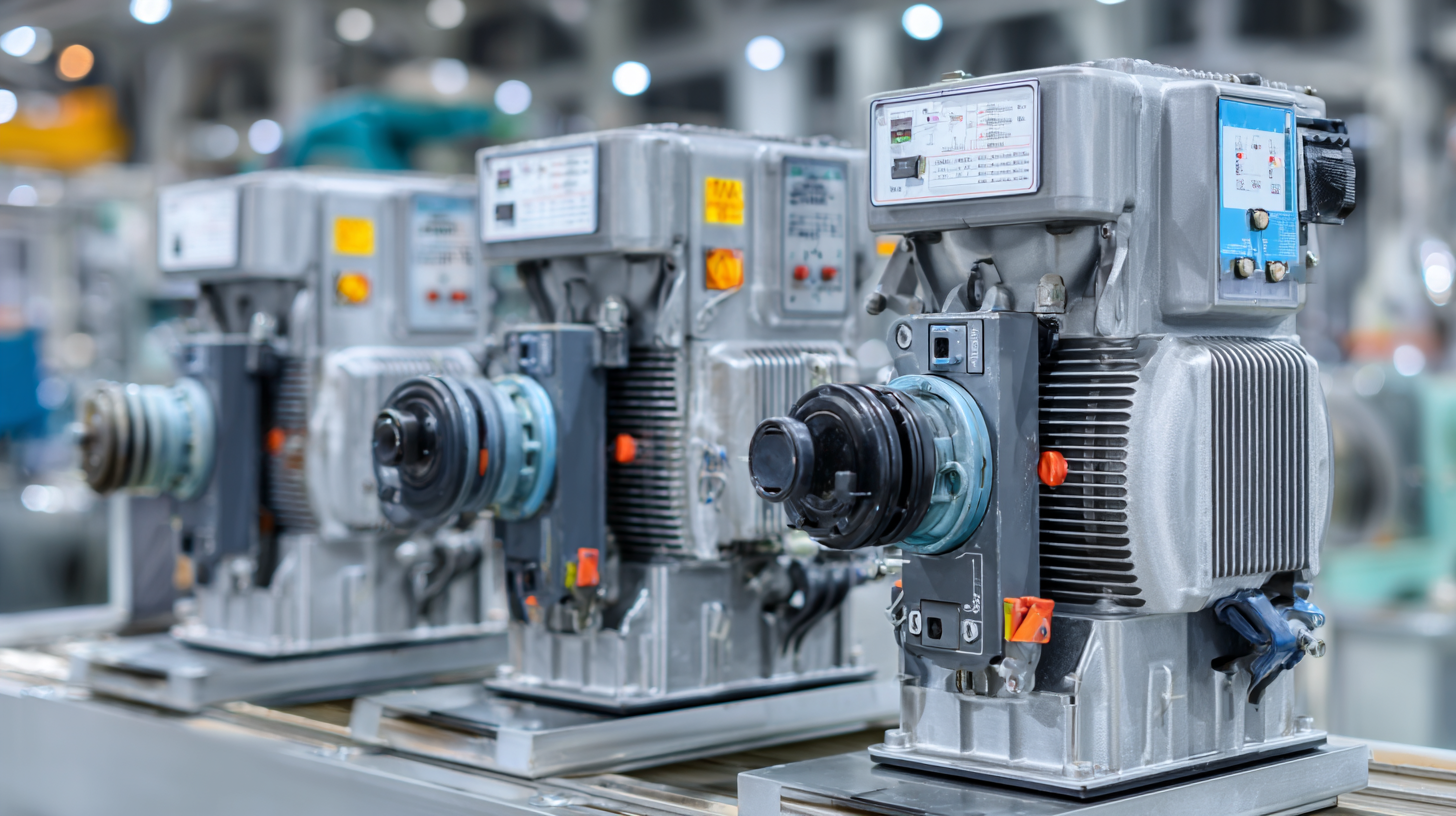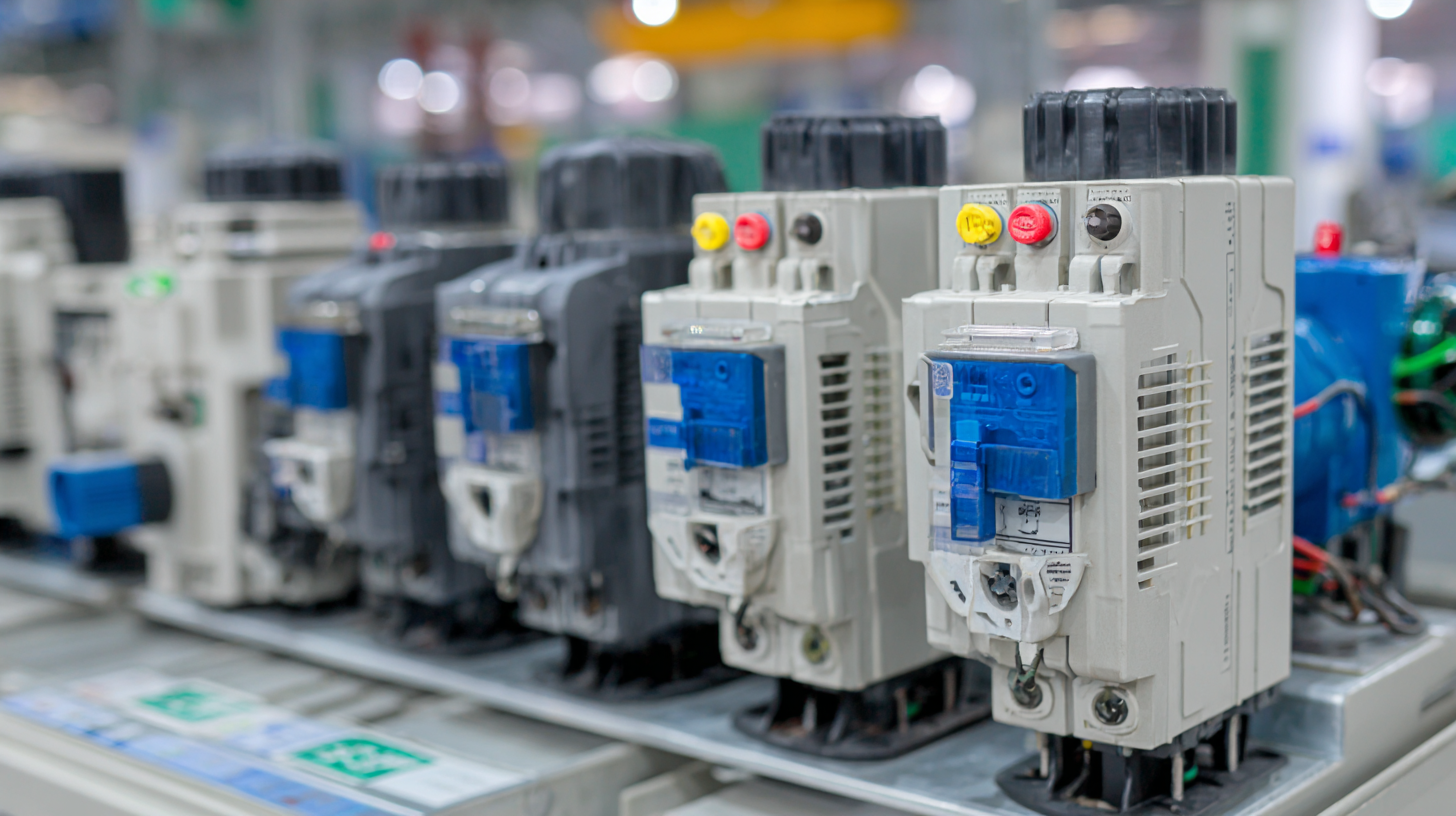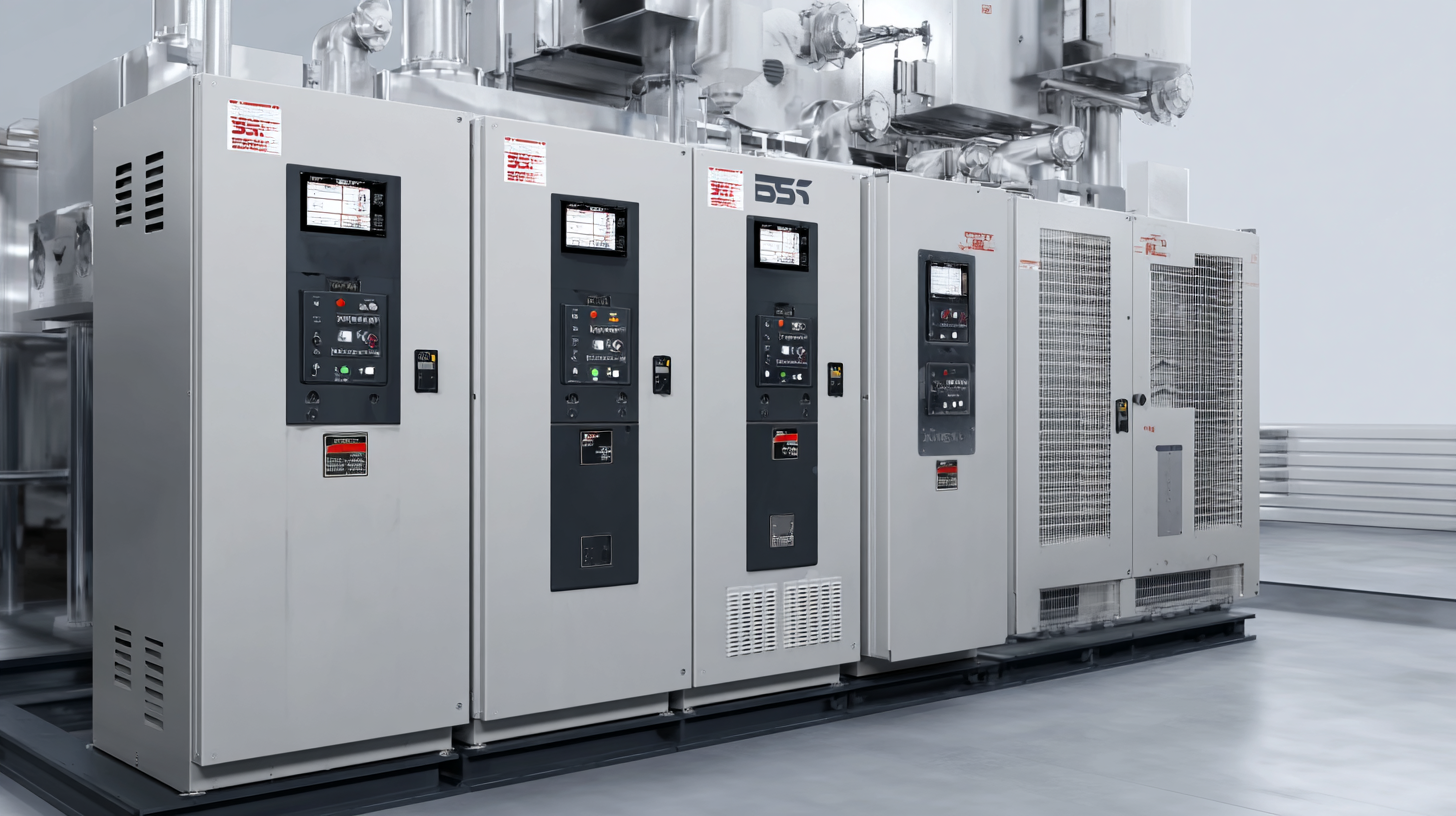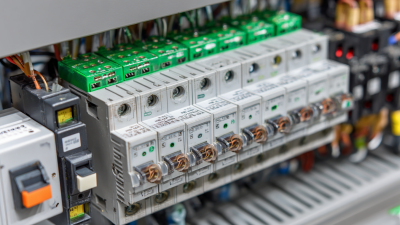Top 10 Benefits of Using Soft Starters in Industrial Applications
In the rapidly evolving world of industrial automation, the integration of technology aimed at enhancing operational efficiency has become paramount. Among these innovations, the use of soft starters has emerged as a pivotal solution for various applications. A soft starter is an electrical device that gradually ramps up the voltage and current supplied to motors, reducing inrush current and mechanical stress during startup. As John Smith, a leading expert in the soft starter industry, aptly stated, “Soft starters not only protect industrial assets but also optimize energy consumption, paving the way for a more sustainable future.”

The benefits of employing soft starters in industrial settings are manifold. They not only improve the longevity of machinery by minimizing wear and tear but are also instrumental in enhancing process reliability and efficiency. With the ability to adjust the starting current and reduce torque spikes, soft starters contribute significantly to smoother operations. As industries increasingly focus on efficiency and sustainability, understanding the top advantages of soft starters becomes essential in making informed decisions for modern applications.
With the insights from industry experts and a comprehensive overview of the benefits, this article delves into the top ten advantages of using soft starters in industrial applications, highlighting their transformative impact on productivity and cost savings in 2025 and beyond.
Advantages of Soft Starters for Motor Protection and Longevity
Soft starters are essential devices in industrial applications, providing numerous benefits particularly in the realm of motor protection and longevity. One of their primary advantages is the reduction of mechanical stress during motor startup. Unlike direct-on-line starting methods, which subject motors to high inrush currents, soft starters gradually ramp up the voltage. This controlled increase minimizes the torque spikes that can lead to premature wear and tear on motor components, thus extending their operational lifespan.
Additionally, soft starters help to protect the motor from overload conditions. By monitoring the current and adjusting the voltage accordingly, these devices can prevent overheating and reduce the risk of failure. This protection is crucial in applications where motors frequently start and stop, as it ensures a more stable and reliable performance. Ultimately, by incorporating soft starters into industrial systems, operators can achieve greater efficiency and less downtime, leading to significant cost savings in both maintenance and equipment replacement.
Energy Efficiency Improvements Through Soft Starters in Industrial Systems
The use of soft starters in industrial applications is becoming increasingly significant, particularly in enhancing energy efficiency in motor systems.
With the global motor lamination market projected to grow from USD 21.38 billion in 2025 to USD 30.89 billion by 2034, the demand for solutions that improve operational efficiency continues to rise.
According to data from the 11th International Conference on Energy Efficiency in Motor Systems, implementing soft starters can significantly reduce inrush currents during motor startup, which not only protects motor assets but also enhances overall system performance.
Governments worldwide are introducing Minimum Energy Performance Standards (MEPS) aimed at boosting energy efficiency in motor systems. This regulatory push is further accelerating the demand for soft starters, essential tools that help industries comply with these standards while reducing energy costs.
Soft starters also contribute to extending the lifespan of electrical components by minimizing mechanical stress during operation.
As more industries prioritize sustainable practices to align with climate goals, the transition to energy-efficient systems through technologies like soft starters is a vital step toward achieving these objectives.
Reduction of Mechanical Stress on Equipment with Soft Starter Usage
The use of soft starters in industrial applications significantly contributes to the reduction of mechanical stress on equipment. By controlling the inrush current during motor startup, soft starters help minimize the mechanical forces exerted on motors and connected machinery. This is particularly important in industries where large motors are used, as the initial surge of power can lead to extensive wear and tear. According to market research, the demand for soft starters is increasing, driven by energy-efficiency mandates that encourage industries to adopt technologies that protect assets and optimize performance.
Moreover, recent developments in the energy sector highlight the importance of soft starters in enhancing efficiency and reliability. For instance, the introduction of high-efficiency motors aligns with the goal of reducing energy consumption, as electric motors account for about a quarter of electricity usage in commercial buildings in the U.S. By employing soft starters, facilities can significantly reduce energy costs through effective management of motor operations, which not only prolongs motor life but also decreases maintenance needs. The correct sizing of soft starters is crucial; it ensures precise control over motor acceleration and deceleration, further reducing the likelihood of mechanical stress and extending the lifespan of industrial equipment.

Enhanced Control Over Startup and Shutdown Processes in Machinery
In industrial applications, the startup and shutdown processes of machinery can significantly impact overall operational efficiency and equipment longevity. One of the primary benefits of using soft starters is their ability to provide enhanced control during these critical phases. By gradually ramping up the voltage and current supplied to the motor, soft starters help reduce inrush currents, which are typically associated with traditional direct-on-line starters. This controlled acceleration minimizes mechanical stress on components, resulting in less wear and tear and a prolonged lifespan for both the motor and the connected equipment.
Furthermore, soft starters are invaluable for ensuring smoother shutdown procedures. Unlike abrupt stops, which can create substantial shock loads that jeopardize mechanical integrity, soft starters facilitate a controlled deceleration. This not only safeguards against potential damage but also contributes to maintaining optimal operational conditions. By efficiently managing startup and shutdown sequences, soft starters enhance the overall reliability of industrial machinery, ultimately leading to improved productivity and reduced maintenance costs.
Top 10 Benefits of Using Soft Starters in Industrial Applications - Enhanced Control Over Startup and Shutdown Processes in Machinery
| Benefit | Description |
|---|---|
| Reduced Mechanical Stress | Soft starters limit inrush currents, resulting in less mechanical stress on components. |
| Improved Energy Efficiency | By controlling the voltage supply, energy consumption during startup is optimized. |
| Enhanced Control | Provides better control over the ramp-up and ramp-down processes of machinery. |
| Reduction in Mechanical Wear | Smooth starts and stops minimize wear on gears, belts, and other drive components. |
| Lowered Noise Levels | Reduces operational noise, contributing to a quieter working environment. |
| Protection Against Overloads | Soft starters can help prevent overloads during starting by controlling current flow. |
| Extended Equipment Life | By reducing stress and wear, the overall lifespan of equipment is increased. |
| Easy Integration | Can be easily integrated into existing electrical systems without major modifications. |
| Cost Savings | Reduces maintenance and replacement costs by prolonging equipment life and reducing repair frequency. |
| Compliance with Standards | Helps in meeting industry standards for noise and energy efficiency. |
Cost Savings Achieved by Implementing Soft Starters in Operations
Soft starters are increasingly becoming essential components in industrial applications, offering significant cost savings that can enhance operational efficiency. According to a report from the International Energy Agency (IEA), soft starters can reduce the energy consumption of motors by up to 30% during start-up. This reduction is achieved through a gradual ramp-up of motor voltage, which minimizes initial power surges, thereby lowering the peak demand charges that can inflate operational costs.
Furthermore, the implementation of soft starters can lead to an extended lifespan of both the motors and the connected machinery. A study by the Electric Power Research Institute (EPRI) indicated that soft starters could extend motor life by as much as 50% due to reduced mechanical stress and lower thermal cycling. These benefits translate into significant maintenance savings and decreased downtime, allowing companies to focus financial resources on other critical areas of their operations. Overall, the adoption of soft starters not only enhances performance but also contributes to the bottom line by providing valuable cost savings across various industrial applications.

Related Posts
-

How to Choose the Right Motor Protection Relay for Your Application
-

Exploring the Impact of Motor Protection Technologies at the 138th Canton Fair 2025 in China
-

Ultimate Guide to Understanding Motor Protection Solutions for Industrial Applications
-

Common Issues with Electric Breakers: A Global Purchasing Insight
-

Innovative Usage Scenarios of DC Molded Case Circuit Breakers in Modern Electrical Systems
-

Ultimate Guide to Choosing the Right Surge Protection Circuit Breaker for Your Needs








